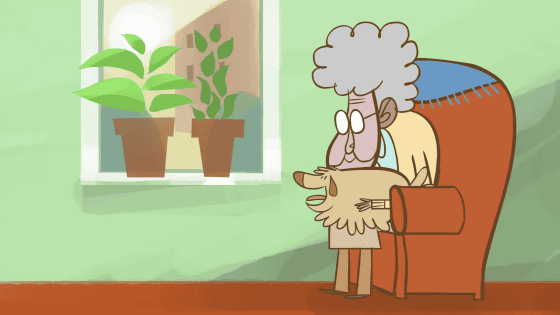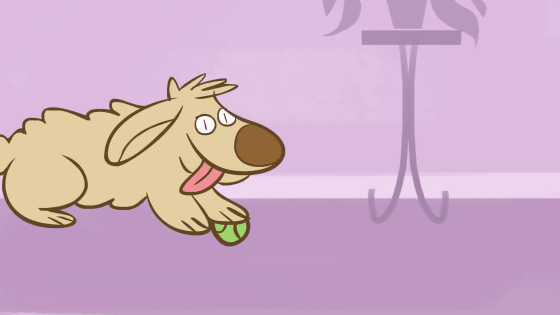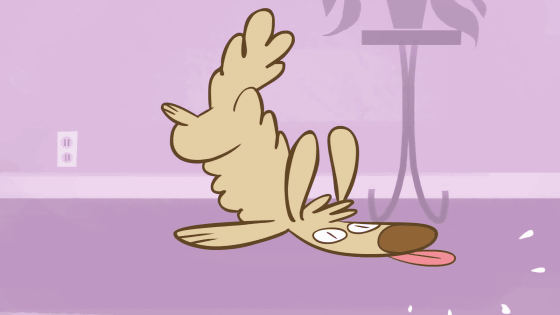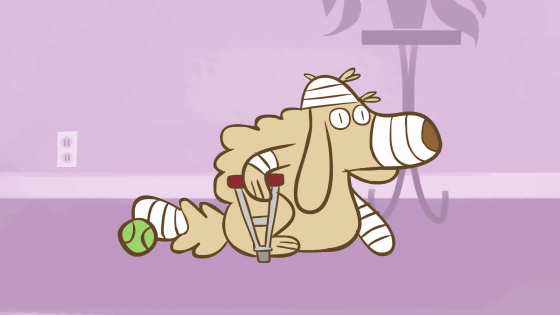How do you feel pain other than human beings?

Humans know various types of pain, such as "pain in the injection", "pain hitting the little finger against the corner of the dance", "pain in the tooth decay", and we also know how to avoid them. However, non-human creatures ...... There are many parts that have not been clarified yet how mammals such as dogs and cats, snails, octopus etc. are experiencing pain. The fact that "How do living things feel pain" which has been found from research so far is on sale in the movie.
How do animals experience pain? - Robyn J. Crook - YouTube
We have a lot of involvement with living things, such as living with living things, raising it for eating, targeting experiments to contribute to science. Living creatures are very important for human life, so it is also important not to feel unnecessary pain.

Dogs, which are mammals, have parts in common with humans, so there are parts that you know about pain. Suppose a dog falls by stepping on a ball, for example.


Pain relief is effective like human beings in such a case.

But what about the pain in shrimp, snakes, and snails?

To understand this, you first need to understand the pain experienced by vertebrates, including humans.

There are two major types of processes in which pain is born. First, when the nerve or skin feels pain.

At this time, the pain information passes through the nerve ......

It reaches the spinal cord.

Then, by motor neurons, we are moved away from the subject of the threat. This is called nociception.

Pain sensation is what many animals with a simple nervous system experience. Without pain sensation, organisms can not survive avoiding harm to people.

Also, there is "conscious recognition" of pain for human beings.

This sensory neuron on the skin connects the brain from the spinal cord ......

Pain sensation is created from various parts of the body. This pain is a complex experience involving "emotions" such as fear, panic, stress.

There are also many creatures that do not show their own "emotions" to humans, so it is a difficult part whether creatures recognize pain.

However, observing animals will give you a hint on solving this problem. Wounded wild animals treat their wounds themselves ... ...

Cry to raise the pain ......

It is known for hiding the body.

Also, by research, animals such as chickens and rats are given a mechanism to obtain analgesics when they are wounded, I also know that I will administer analgesics myself.

In addition, you can also see actions to avoid pain, such as leaving the road before the car passes. I am aware of what threats are harming oneself.

As mentioned above, from a number of previous studies, it has been found that vertebrates not only reflexively respond to pain but "recognize" the pain. Therefore it is illegal to unnecessarily hurt animals in many countries.

However, on the other hand, there is no law to protect invertebrates. The behavior of invertebrates is because emotions are hard to read.

Oysters, caterpillars, jellyfish, etc. have no brain, even if there is, there is a very simple mechanism.

Oysters shrink their bodies by nociception when lemon is squeezed ... ...


Because it has a simple nervous system, it is considered to not "recognize the pain" like an animal.

Some invertebrates, like octopus, have some more complex body structures. Octopus is a type of invertebrate with the brain developed and the most intelligent.

However, there are customs of eating octopus as it is alive in many countries.

Similarly, the method of boiling crayfish, shrimps, crabs and the like is also taken, but how it affects invertebrates that being cooked alive, the truth is still not yet I do not know. If humans are giving unnecessary pain to these living things, it is an ethical problem.

Research paper published in 2009I conducted an experiment that gives an electric shock to hermit crab and found that Hermit crabs who were unable to give an electric shock kept staying in their shells, whereas Hermit crabs given electric shocks left their shells, In the case of giving a degree of electric shock that does not come out of the shell, it is noted that when new shells were given, it was often moved to there. This is explained as being a mere reflex in the action of "to keep a hot dish with food in it, but drop it if it is empty" in human beings.

In addition to this, octopuses curl to protect the injured tentacles ... ...

Take a risk of using tentacles to capture prey. In other words, invertebrates are not only reacting reflexively to pain, they are evaluating their own senses and acting.

The crab receiving the electric stimulus repetitively rubbed the place where electric stimulation was received ......

When a madonna is also found to be harmfully stimulated, it will cause the body to get caught. In other words, they say that invertebrates have memory about their senses.

There are many things that living things do not understand yet, but as the research progresses and knowledge spreads out, the movie is closed as the world without unnecessary pain may be realized.

Related Posts:







